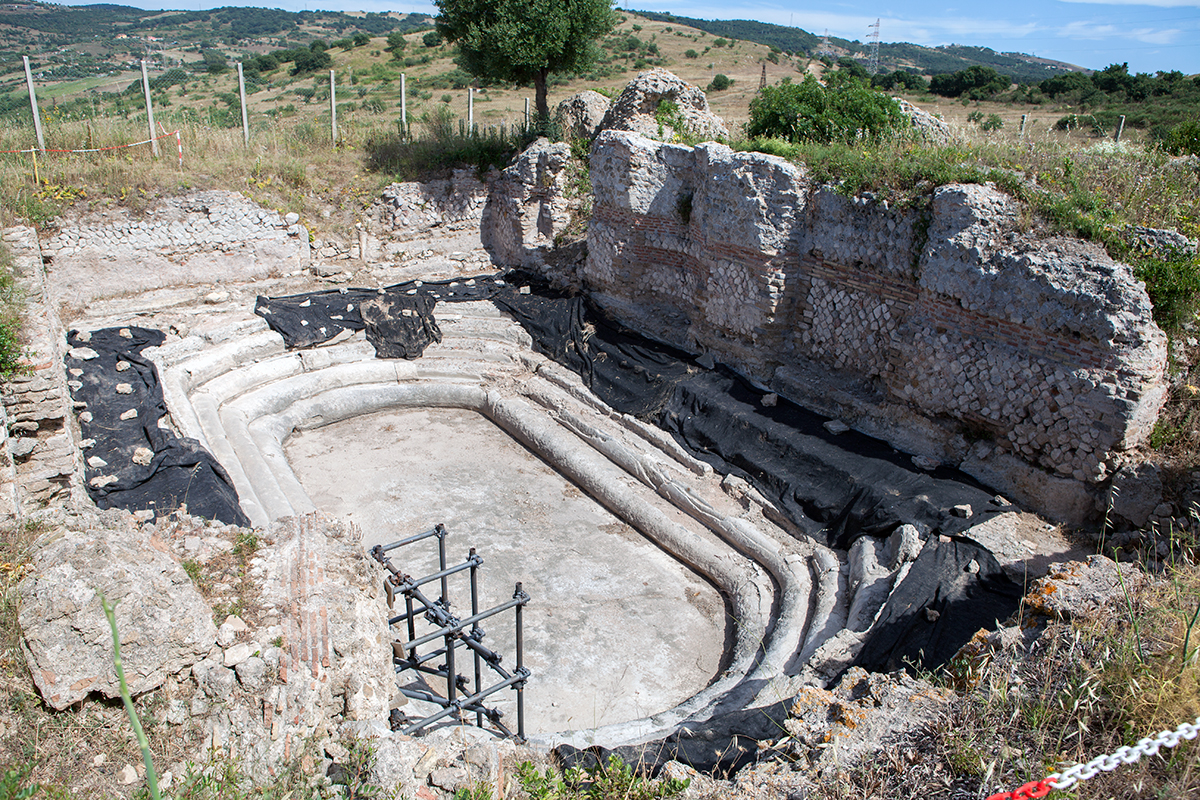 Students excavating the Roman city of Aquae Tauri (Photo by Harry Muijsson)
Students excavating the Roman city of Aquae Tauri (Photo by Harry Muijsson)Report by Gerard Huissen
At the end of June this year, while on holiday in Italy, a friend asked me if I would like to have lunch with my wife somewhere by the sea. The choice was a restaurant in Marinella.
Of course I agreed and, because Marinella is close to Civitavecchia, I suggested to visit first the famous Roman baths Terme Taurine (see "The Terme Taurine near Civitavecchia"). There I met the group of students who, under the direction of Dr. Stefano de Togni, were going to do this year's excavation campaign of Aquae Tauri. Apparently, they lunched every working day on the grounds of the nearby Roman bathhouse. Since I had never seen the excavation site in question before, we made an appointment to visit the excavation work after our lunch. On the spot we spoke to one of the archaeologists:
The ACHELOO PROJECT
In June and July 2021 the fifth campaign of archaeological investigations took place at the site of Ficoncella (Civitavecchia) as part of the Acheloo project. This is the name given to the mission to rediscover the Roman city of Aquae Tauri and the adjacent large sanctuary, led by Prof. Massimiliano David of the University of Bologna and his staff consisting of Dr. Stefano De Togni, Dr. Alessandro Melega, Dr. Maria Stella Graziano and Dr. Eleonora Rossetti.
This year work continued to deepen the research and excavations started in the previous years.
For example, both the rooms outside the enclosure, largely excavated in the limestone block, and one large room of about 7 x 4 m, located along the south side of a large rectangular structure, were further investigated as well as the area around the large bath from Trajan's time.
The researcher we spoke explains: "Apparently these structures are a remake of a large building, which was connected to the one we found on the slope to the north. So our goal is to try to understand how these structures were connected. The challenge will be to be able to connect the different rooms near the large swimming pool, which is of course the core of the whole complex. It is most likely a large sanctuary whose historical context we are trying to analyse, and perhaps we can give an even higher meaning to this pool. It is a question of understanding why the sanctuary was designed and shaped in this way and then what causes its decay and disuse, so that the whole story can be told. In this way, the site would gain fascination and increase people's curiosity. Otherwise, it would remain a beautiful monument that tourists can admire without fully understanding and appreciating it. By the way, this is one of the most popular areas with the locals, mainly because of the healing thermal waters that still flow there. The dual function of the sanctuary in Ficoncella, as a wellness centre and as a sacred place where wellbeing was linked to spirituality, will certainly be explored in the coming years. Bathing in this water went beyond mere immersion, but implied a relationship with the divine, similar to the contemporary use of the miracle water of Lourdes".
In our opinion, it would be desirable to create a visitors' route with walkways to enable the disabled to admire the site as well.
In order to understand and learn more about this fascinating Roman and late Roman site, we will have to wait for the results of the research and studies during further excavation campaigns which hopefully, with sufficient funding, can be carried out in the coming years.







 We are committed to providing versions of our articles and interviews in several languages, but our first language is English.
We are committed to providing versions of our articles and interviews in several languages, but our first language is English.